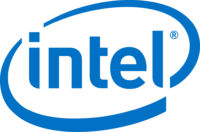Training schedule
IN-COMPANY TRAINING PROGRAMS
Contact Giovanni Lanzani, if you want to know more about custom data & AI training for your teams. He’ll be happy to help you!
Check out more
In this course, application developers learn how to design, develop, and deploy applications that seamlessly integrate components from the Google Cloud ecosystem. Through a combination of presentations, demos, and hands-on labs, participants learn how to use GCP services and pre-trained machine learning APIs to build secure, scalable, and intelligent cloud-native applications.
This training is for you if…
you have:
- Completed Google Cloud Platform Fundamentals (GO8324) or have equivalent experience
- Working knowledge of Node.js
- Basic proficiency with command-line tools and Linux operating system environments
This training is not for you if…
you have:
- No working knowledge on Node.js
- No experience on Linux
Clients we've helped
What you'll learn
- Use best practices for application development.
- Choose the appropriate data storage option for application data.
- Implement federated identity management.
- Develop loosely coupled application components or microservices.
The schedule

Module 1: Best Practices for Application Development
- Code and environment management
- Design and development of secure, scalable, reliable, loosely coupled application components and microservices
- Continuous integration and delivery
- Re-architecting applications for the cloud
Module 2: Google Cloud Client Libraries, Google Cloud SDK, and Google Firebase SDK
- How to set up and use Google Cloud Client Libraries, Google Cloud SDK, and Google Firebase SDK
- Lab: Set up Google Client Libraries, Google Cloud SDK, and Firebase SDK on a Linux instance and set up application credentials
Module 3: Overview of Data Storage Options
- Overview of options to store application data
- Use cases for Google Cloud Storage, Google Cloud Datastore, Cloud Bigtable, Google Cloud SQL, and Cloud Spanner
Module 4: Best Practices for Using Cloud Datastore
- Best practices related to the following: Queries, Built-in and composite indexes, Inserting and deleting data (batch operations), Transactions, Error handling
- Bulk-loading data into Cloud Datastore by using Google Cloud Dataflow
- Lab: Store application data in Cloud Datastore
Module 5: Performing Operations on Buckets and Objects
- Operations that can be performed on buckets and objects
- Consistency model
- Error handling
Module 6: Best Practices for Using Cloud Storage
- Naming buckets for static websites and other uses
- Naming objects (from an access distribution perspective)
- Performance considerations
- Setting up and debugging a CORS configuration on a bucket
- Lab: Store files in Cloud Storage
Module 7: Securing Your Application
- Cloud Identity and Access Management (IAM) roles and service accounts
- User authentication by using Firebase Authentication
- User authentication and authorization by using Cloud Identity-Aware Proxy
- Lab: Authenticate users by using Firebase Authentication
Module 8: Using Google Cloud Pub/Sub to Integrate Components of Your Application
- Topics, publishers, and subscribers
- Pull and push subscriptions
- Use cases for Cloud Pub/Sub
- Lab: Develop a backend service to process messages in a message queue
Module 9: Adding Intelligence to Your Application
- Overview of pre-trained machine learning APIs such as Cloud Vision API and Cloud Natural Language Processing API.
Module 10: Using Cloud Functions for Event-Driven Processing
- Key concepts such as triggers, background functions, HTTP functions
- Use cases
- Developing and deploying functions
- Logging, error reporting, and monitoring
Module 11: Using Cloud Endpoint to Deploy APIs
- Open API deployment configuration
- Lab: Deploy an API for your application
Module 12: Debugging Your Application by Using Google Stackdriver
- Stackdriver Debugger
- Stackdriver Error Reporting
- Lab: Debugging an application error by using Stackdriver Debugger and Error Reporting
Module 13: Deploying an Application by Using Google Cloud Container Builder, Google Cloud Container Registry, and Google Cloud Deployment Manager
- Creating and storing container images
- Repeatable deployments with deployment configuration and templates
- Lab: Use Deployment Manager to deploy a web application into Google App Engine Flex test and production environments
Module 14: Execution Environments for Your Application
- Considerations for choosing an execution environment for your application or service: Google Compute Engine, Container Engine, App Engine Flex, Cloud Functions, Cloud Dataflow
- Lab: Deploying your application on App Engine Flex
Module 15: Monitoring and Tuning Performance
- Best practices and watchpoints for performance
- Key concepts related to Stackdriver Trace and Stackdriver Monitoring
- Detecting and resolving performance issues
- Lab: Use Stackdriver Monitoring and Stackdriver Trace to trace a request across services, observe, and optimize performance
- Integrate application components and data sources.
- Debug, trace, and monitor applications.
- Perform repeatable deployments with containers and deployment services.
- Choose the appropriate application runtime environment; use Google Container Engine as a runtime environment and later switch to a no-ops solution with Google App Engine Flex.
Get In Touch!
Contact Max Driessen now if you want to learn more and take your cloud skills to the next level!
Ruben Kruiver
Ruben is Cloud Consultant for Xebia. Ruben is completely into tech and a good apatite to learn new things whenever he can. Starting as a professional Software Engineer his carrier lead him through the role of DevOps engineer into the amazing world of Cloud Engineering. From this he has good experience with GCP and is well underway into earning the Professional Cloud Architect. He has already has planned for the next certifications.
























